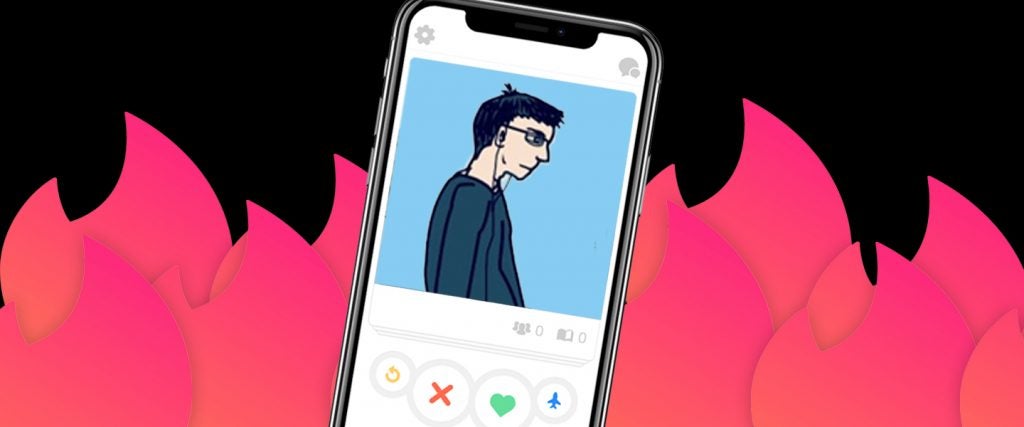We can blame Tinder for a lot of things: innumerable bad dates, fish-holding profile photos, that whole Tinder Swindler documentary. But inceldom? That seems less promising. This, however, is the argument being made by men like Zac Stern, founder of the relationship app Official. On Twitter this morning, he began sharing a series of charts demonstrating his thesis that Tinder is behind the rise of the incel movement and increase in the number of men who aren’t having sex.
At first, the data looks damning — Tinder’s creation coincides with a sharp jump in the number of men who haven’t had sex in the last year. Men also receive considerably fewer matches than women on the app, which points to a sense of “inequality” between genders. But Tinder isn’t the cause of sexual imbalances, celibacy and the insidious culture surrounding a hyper-online subset of men who have decided to weaponize this into inceldom. If anything, it’s just a by-product.
At the core of the argument that Tinder breeds incels is the fact that women experience a lot more numerical “success” on the app than men. As one of Stern’s tweets states, “The median female user receives about 2.75 matches per day while the median male user only receives about 1.1 matches. At that rate, to expect a match, a typical woman would have to like just three men while a man would need to like over 50 women.”
While this may be true, these figures aren’t occurring in a vacuum: They’re directly correlated with each other. Who are the women in this data matching with if not the same men who are liking over 50 women? With the knowledge that many men are playing a numbers game in order to receive matches — and just swiping right on everyone — women become more discerning with their own matches. And, knowing that women are discerning with their matches, men continue to play their numbers game in order to receive more matches. It becomes a self-feeding cycle, and undoubtedly, it’s not a healthy one. Relationships based on best-fit aren’t facilitated, and men likely do feel worse about themselves for their few prospects.
Are we really supposed to believe, though, that women were any less choosy about their dating pool pre-dating app? It’s not as if women just blindly accepted every offer before apps existed. Again, Tinder is just a structure under which this dynamic unfolds, not the cause of the structure itself.
So what is the cause of the structure that leads to men feeling isolated, some of whom may turn to the incel identity?
Undoubtedly, it’s not just one casual dating app. Perhaps the advent of Tinder in 2012 coincides with a sharp rise in male celibacy largely because it’s one of many apps that emerged in a short period of time that together mark an increased sense of anomie and isolation. Instagram is one, and other dating apps like Grindr, Hinge and Bumble all emerged within a year or two of Tinder as well. Surely, then, it’s not just Tinder where male rejection occurs — it’s all our online spaces.
Likewise, this coincides with the proliferation of niche internet communities and an increased attitude of normalcy toward spending your days online, particularly on forums. In fact, incel culture predates Tinder entirely, and was instead incubated on forums like Reddit and 4chan, where the toxicity of the term festered throughout the 2000s.
Most significantly, though, all of this aligns with ever-increasing wealth inequality, worsening professional and economic prospects and deteriorating political conditions among a widening pool of material and cultural circumstances that would cause anyone to feel despair, nihilism and anger toward their state. We live in an era of increased despondency that impacts every aspect of our lives — what happens on a dating app is only a minuscule result of that.
So although it’s tempting to label Tinder and online dating as the cause of inceldom, it’s better to just keep swiping.

